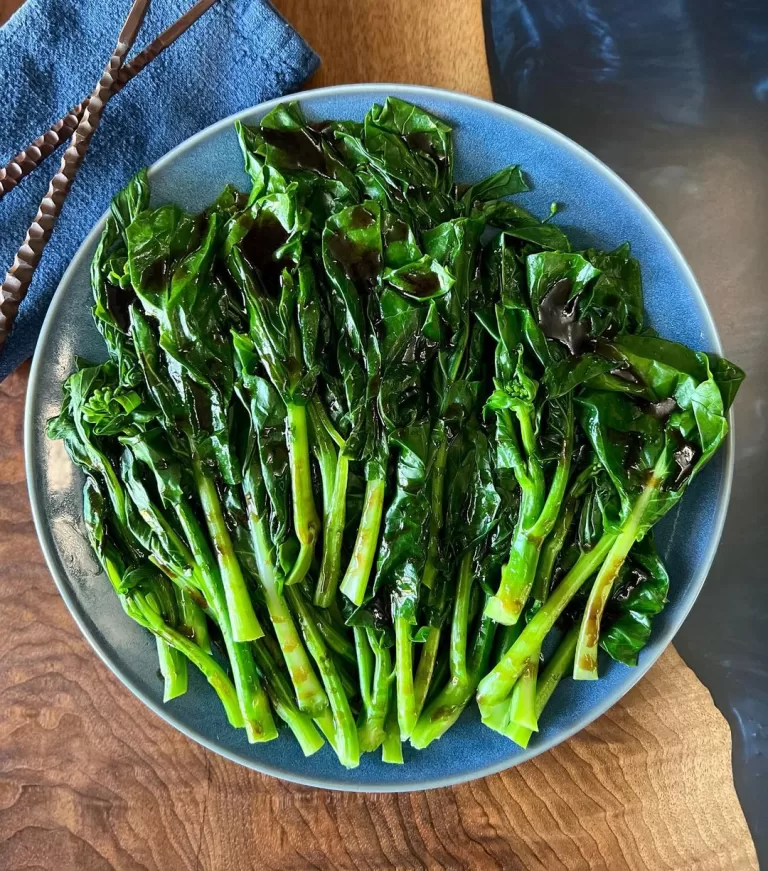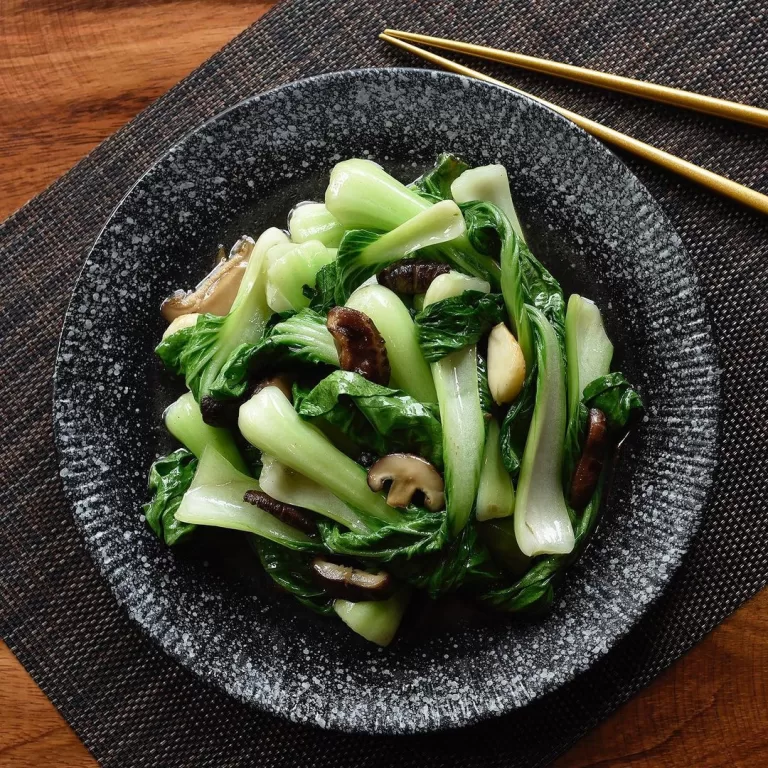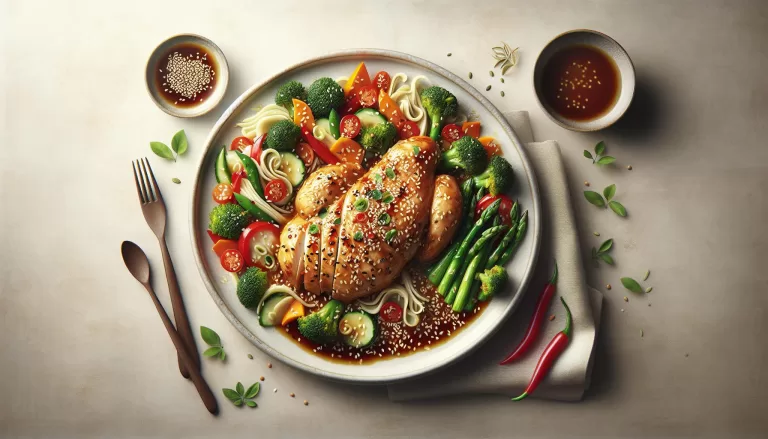Master Your Homemade Tan Tan Ramen Recipe – Tips, Toppings, and Nutrition Facts

Ingredients for Homemade Tan Tan Ramen
To create your own flavorful Tan Tan Ramen at home, there are a few essential ingredients you’ll need. Let’s dive right into it.
The Soup Base
For the soup base, you’d need:
- 5 cups chicken stock: It’s crucial to preparing a strong, flavorful base. You can either make it at home or buy it from the supermarket.
- 3 tablespoons sesame paste: It’s what gives Tan Tan Ramen its rich and nutty flavor. If you can’t find it, Tahini can serve as a suitable substitute.
- 1 tablespoon soy sauce: To add depth and umami to the soup.
- 1 tablespoon sugar: To balance out the salty soy sauce and the spicy chilies.
The Ramen
For the Ramen, you’d need:
- 4 packs ramen noodles: You can’t have ramen without these!
The Toppings
Finally, to top off your dish, you’d need:
- 1 lb ground pork: This provides a savory and hearty topping to the dish. If you’re not fond of pork, substitute it with chicken or beef.
- 1 bunch green onions, chopped: Adds a fresh crunch and a pop of color.
- 4 tablespoons chili oil: To give your dish that signature kick. Adjust the quantity according to your preference.
Here is a brief nutritional breakdown per serving:
| Nutrient | Amount |
|---|---|
| Calories | 580 |
| Carbs | 62g |
| Protein | 25g |
| Fat | 27g |
Now that you’re well-equipped with all the essential ingredients, it’s time to roll up your sleeves and start cooking your homemade Tan Tan Ramen! Here’s hoping your culinary journey would be as fun as it would be tasty.
Preparation Steps
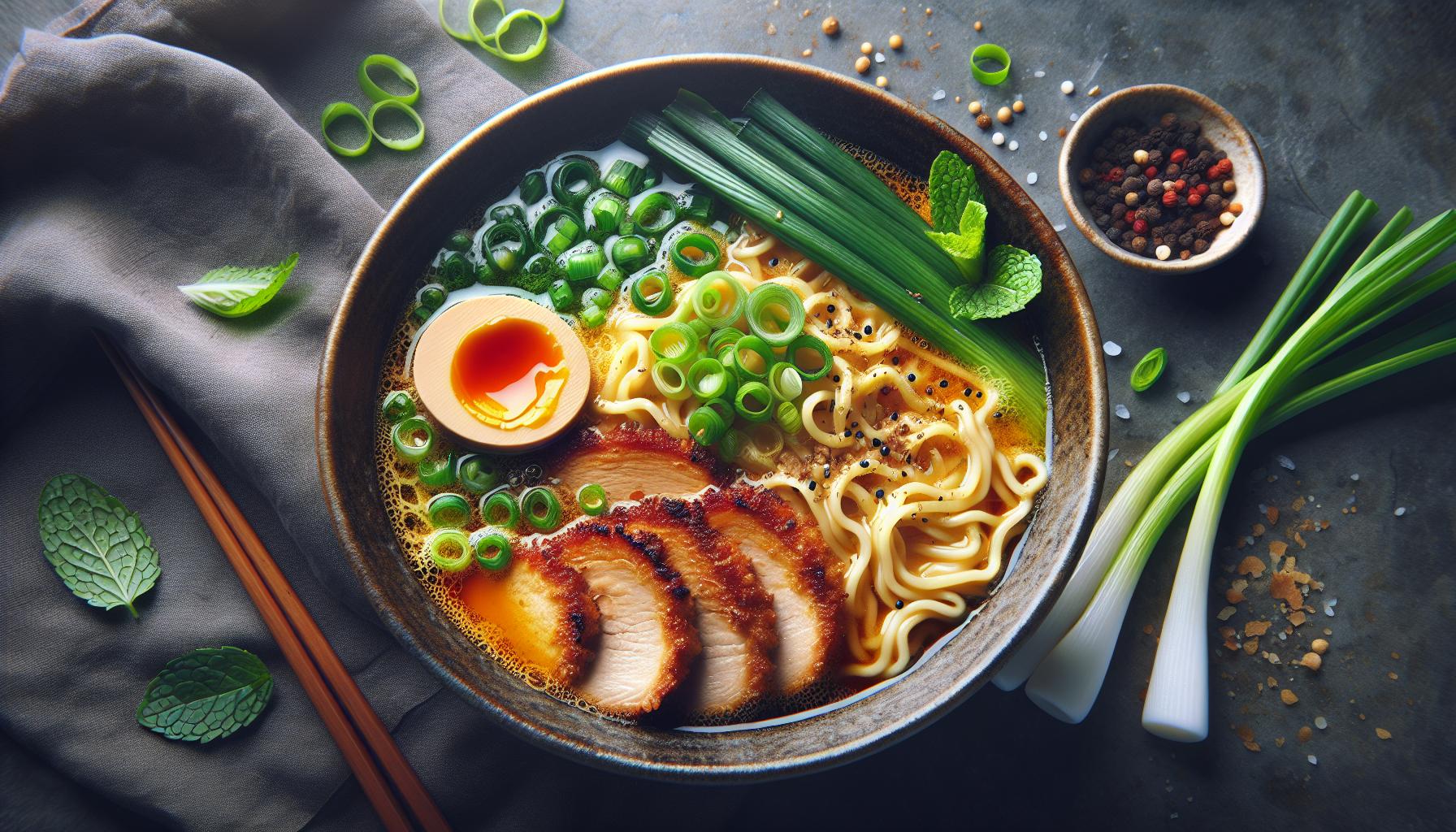
Now, let’s get to the most exciting part – the preparation.
First, initiate your cooking process by preparing the soup base. In a saucepan, combine 4 cups of chicken stock, 2 tablespoons of soy sauce, and 1 tablespoon of sesame paste. You’ll find the sesame paste adds an authentic, robust flavor that’s difficult to replicate. Don’t have sesame paste? Substituting it with peanut butter can do the trick, though you’ll notice a slight variation in flavor. Stir these ingredients over medium heat until they blend harmoniously.
Next, let’s focus on the centerpiece – the ramen noodles. Cook 4 packs of ramen noodles in a large pot of boiling water. Strive for that perfect ‘al dente’ texture, which should take around 3 to 4 minutes.
As those noodles bubble away, turn your attention to the meat. Cook 1 pound of ground pork in a skillet over medium heat. For an extra flavor kick, infuse the pork with 1 tablespoon of chili oil, 2 cloves of minced garlic, and a thumb-size piece of minced ginger.
Arrange your cooked noodles in bowls, ladle your well-spiced broth on top, and then crown it with a portion of your juicy, fragrant pork. Top it off with vibrant, crisp toppings. Here we’re considering sliced scallions, a soft boiled egg, and a sprig of fresh mint.
Voila! Your tantan ramen is ready to be devoured.
While enjoying this homemade delicacy, you’re also investing in good health. Here’s a quick nutritional breakdown per serving:
| Nutrient | Measure |
|---|---|
| Calorie | 500 kcal |
| Carbs | 40g |
| Protein | 25g |
| Fat | 30g |
| Vitamins | A, B6, B12, C, E, K |
Making the Tan Tan Ramen Broth
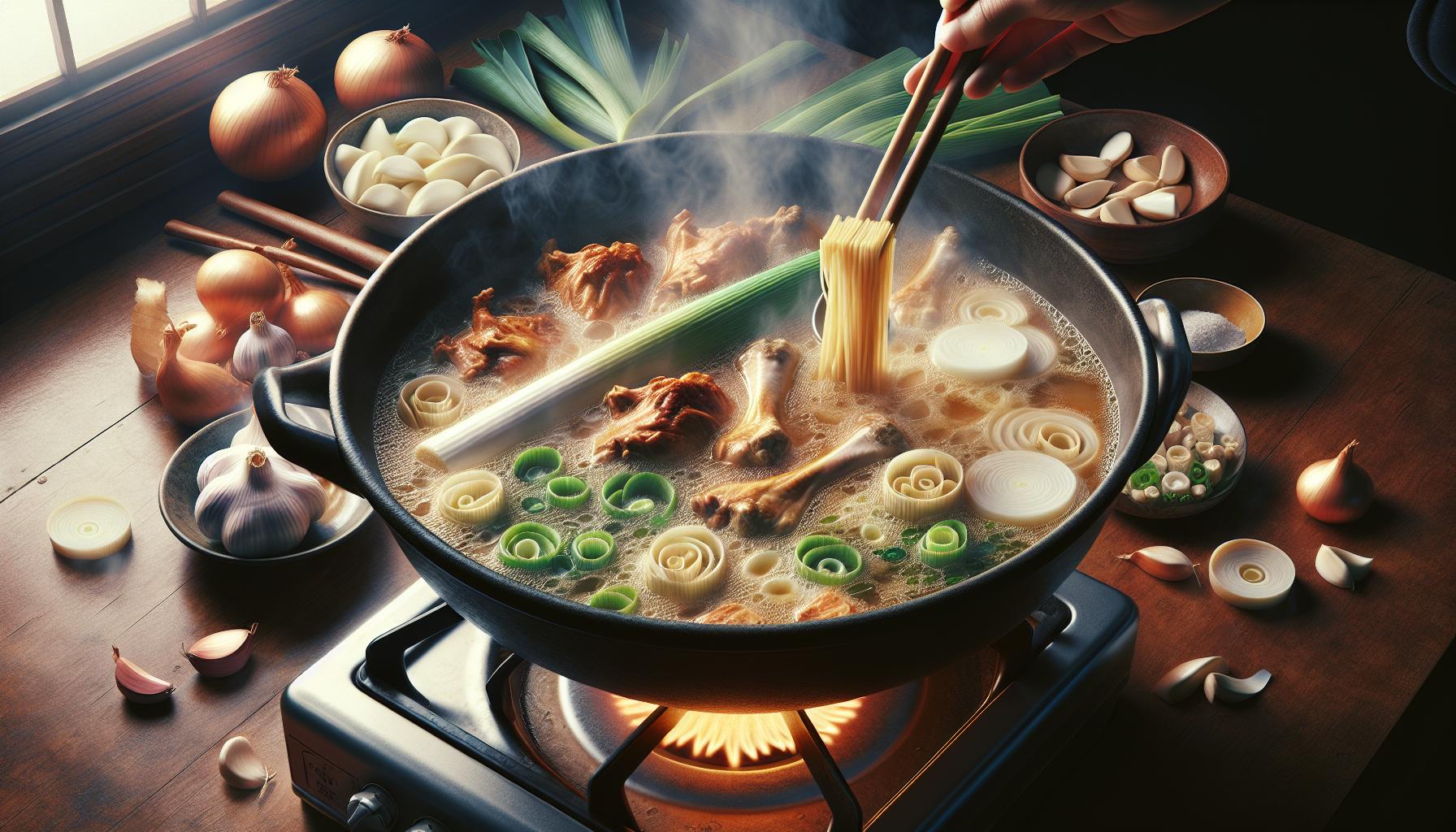
Ramen broth takes center stage in cooking, providing a unique flavorful backbone of Tan Tan Ramen. Folks, we now dive into making the perfect Tan Tan Ramen broth.
You’ll need about 2 liters of water as a base. Then, add 1 kg of chicken bones. It is the secret to a rich, savory broth. Boil the bones for at least 3 hours on medium to low heat. While the chicken bones are a classic choice, you can also use pork or beef bones. It’s worth investing in this process, trust me!
Choose your aromatics: a large onion, 2 leeks, 3 cloves of garlic, 5 cm piece of ginger, all roughly chopped. It’s here that we introduce a unique ingredient – our one and only kombu seaweed. Soak a 20 cm piece of kombu in cold water for 30 minutes and then add it to your broth. Kombu releases umami flavors which elevates the taste of your broth. Don’t forget to fish it out after an hour not to overpower the flavor.
Now let’s talk seasoning. Add 3 tbsp of soy sauce, 2 tbsp of mirin, plus 1 tsp of rock sugar into the pot. Remember, saltiness can be adjusted later on but the umami and a hint of sweetness can only be infused during the cooking.
The Tan Tan Ramen broth simmers for about 6 hours. While this might seem like a long time, this slow process is what intensifies its rich flavor. Remember to skim the impurities from time to time, leaving you with a clear broth.
What are we looking at for nutritional value here? Check out this brief table:
| Nutrient | Amount per 1 Cup Serving |
|---|---|
| Calories | 60 |
| Carbohydrates | 6 g |
| Protein | 2 g |
| Fat | 3 g |
| Vitamins | High in B-vitamins |
Assembling the Tan Tan Ramen Bowl
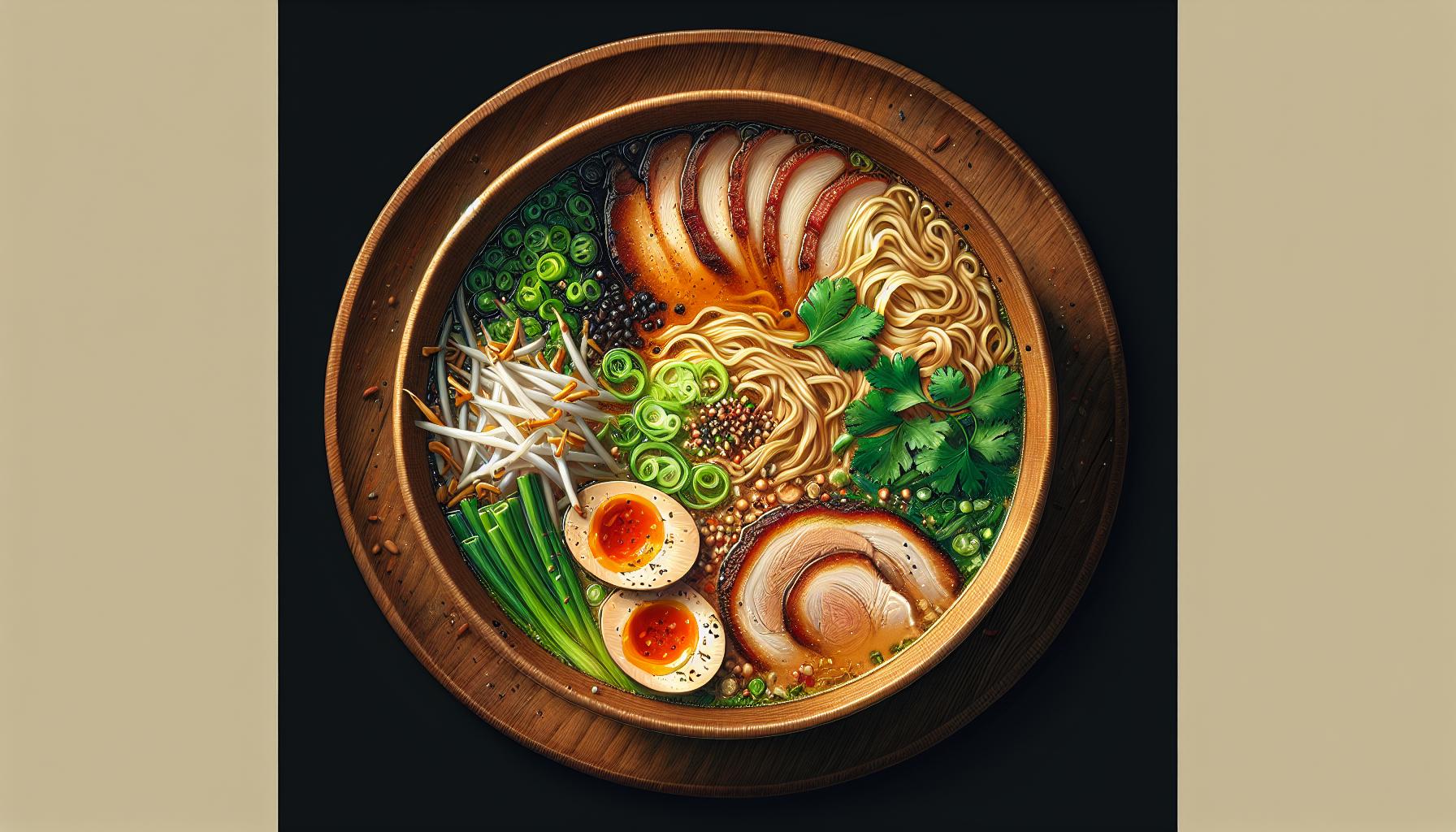
No matter how robust and savory your broth may be, it’s the assembly of the Tan Tan Ramen bowl that brings the magic to life. It’s the place where every ingredient finds its harmony.
Start by taking your ramen noodles. You’ve got options here: thick or thin, straight or wavy. The choice is entirely based on your preference, but traditional Tan Tan Ramen often uses thin, straight noodles. Boil them as per the package instructions and drain.
Divide the cooked noodles among four bowls. Pour your deeply flavored broth over them. The rich scent is something that kitchen dreams are made of!
Now comes the fun part – topping it all off. Crispy, succulent slices of chashu pork, marinated overnight and slow-cooked to melt-in-your-mouth perfection, lie on top. A soft-boiled ramen egg, cut in half to reveal its beautifully runny yolk, is next.
Then come the veggies. A handful of bright, crunchy bean sprouts add texture. A sprinkle of chopped green onions and sprigs of fresh cilantro lift the dish. Let’s not forget the indispensable ladle of spice-laden tan tan sauce, made from sesame paste and chili oil. This is what gives your ramen its signature kick.
For a unique twist, try adding some roasted garlic chips, an unconventional topping that adds a delightful crunch and deep, roasted flavor.
In terms of nutritional value, expect around 590 calories per bowl, with 35 grams of protein, 80 grams of carbs, and 20 grams of fat. The dish also offers a high count of B-vitamins which are essential for energy production. Fantastic, isn’t it?
Tips for Serving and Enjoying
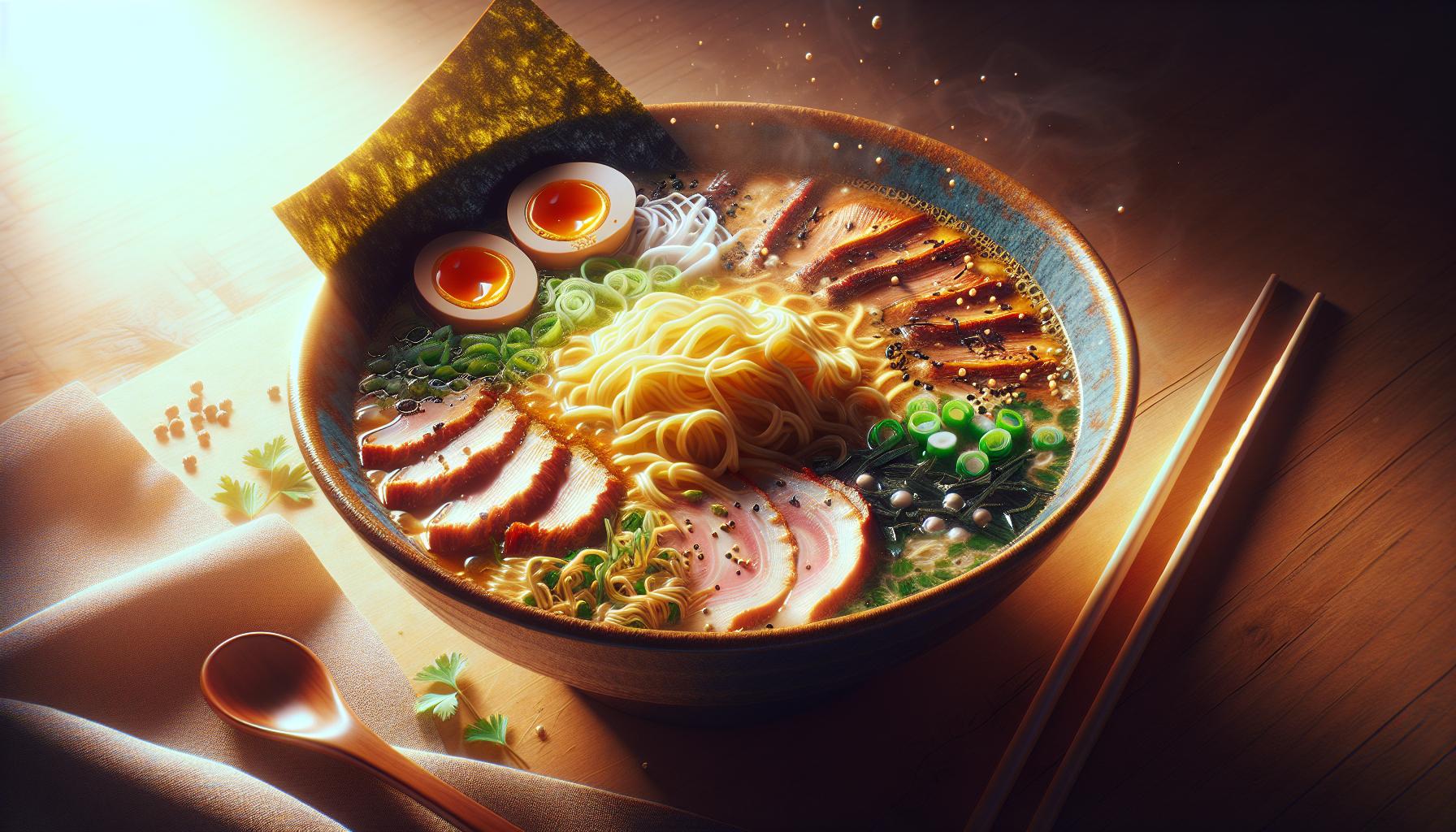
Now that you’ve assembled your ravishing bowl of Tan Tan Ramen, let’s dive into some pro tips that’ll enhance your ramen-eating experience.
Use the Right Utensils: With the variety of toppings and the depth of the broth, a large, deep bowl is ideal. And don’t rely on just a fork or a spoon. Traditional ramen spoons and chopsticks are your best friends here.
Mix Well Before Eating: Resist the urge to dig right in! Give your bowl a good mix first. It’ll ensure that the rich flavors from the bottom are evenly distributed throughout the ramen.
Slurp it Up: Don’t be shy, slurping is encouraged when it comes to enjoying ramen. It cools down the noodles and enhances the flavors. Plus, it’s part of the fun!
Sprinkle on some Extra Toppings as per your preference. A dollop of chili oil for heat lovers, a couple of toasted sesame seeds for that extra crunch, or a squeeze of lime for a tangy kick – go ahead and make it your own.
One final tip, always taste as you go. Personalize this ramen to suit your taste buds. Want it spicier? Add more chili oil. Prefer it with a stronger soy or miso taste? Go ahead.
Remember, homemade ramen’s beauty lies in its flexibility. Play around with the ingredients until you find the magic combination that nails it for you.
When it comes to nutritional value, it’s worth noting that holy grail of balance this recipe strikes. Check out the table below to see how indulging in this meal supports a well-rounded diet.
| Nutrient | Amount |
|---|---|
| Calories | 590 |
| Carbs | 80g |
| Protein | 35g |
| Fat | 20g |
| B-vitamins | High content |
Conclusion
So there you have it. Your homemade Tan Tan Ramen is more than just a meal; it’s a culinary adventure that’s both fun and satisfying. Remember, the right utensils enhance your ramen experience and don’t forget to mix your bowl well before diving in. Slurp away to your heart’s content! Feel free to play around with toppings like chili oil, sesame seeds, and lime to make your ramen uniquely yours. And don’t forget the golden rule of cooking – taste as you go. Your ramen, your rules. Not only is this dish delicious, it’s also packed with nutritional benefits. With around 590 calories, 35g of protein, 80g of carbs, and 20g of fat, it’s a balanced meal. Plus, it’s a great source of B-vitamins for energy. So, go ahead, enjoy your homemade Tan Tan Ramen and relish the flavors of your hard work.



